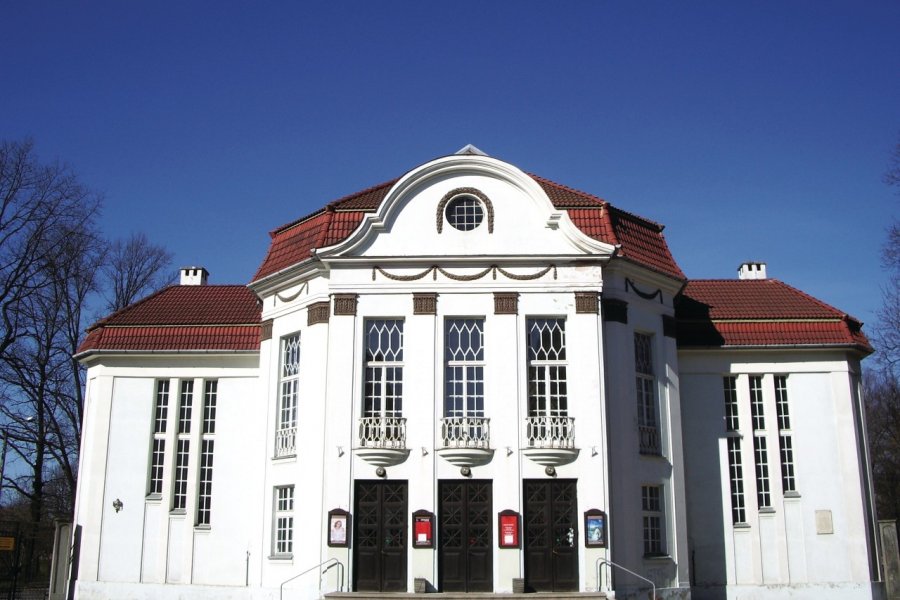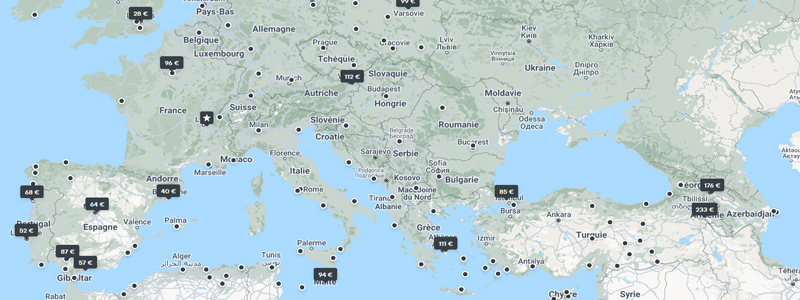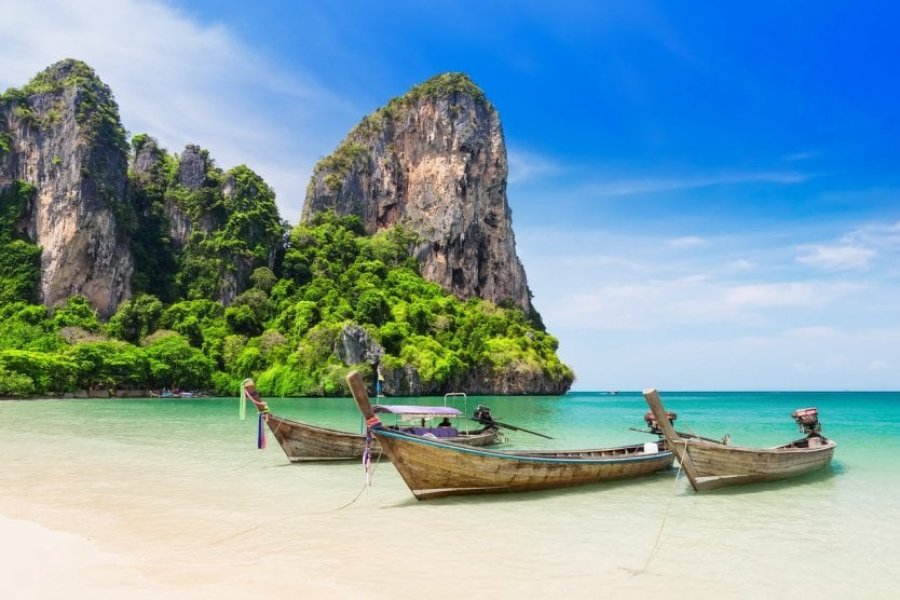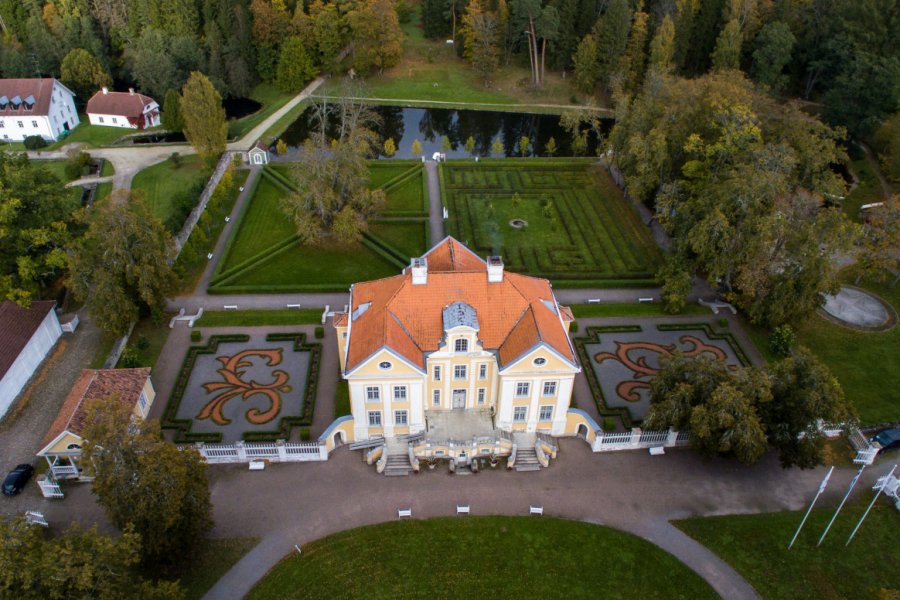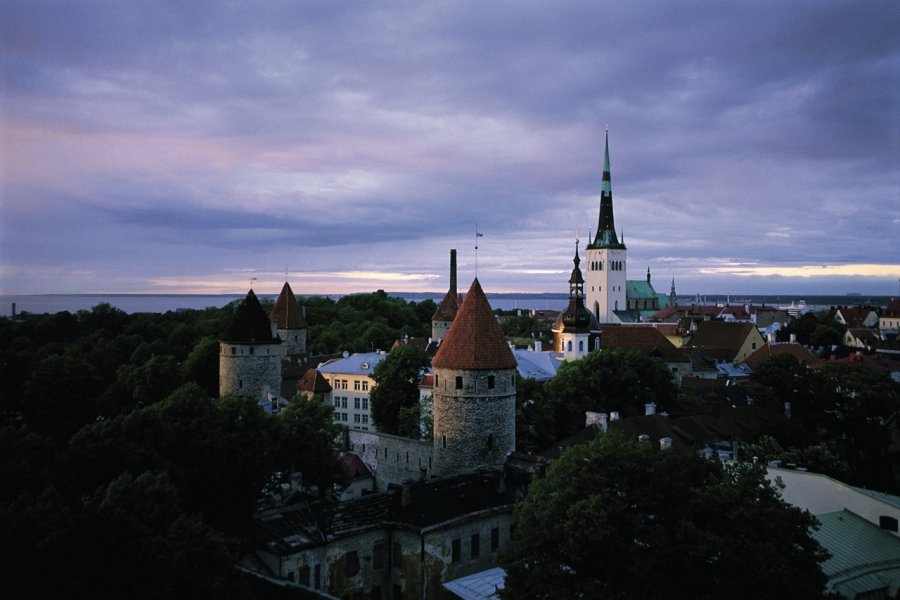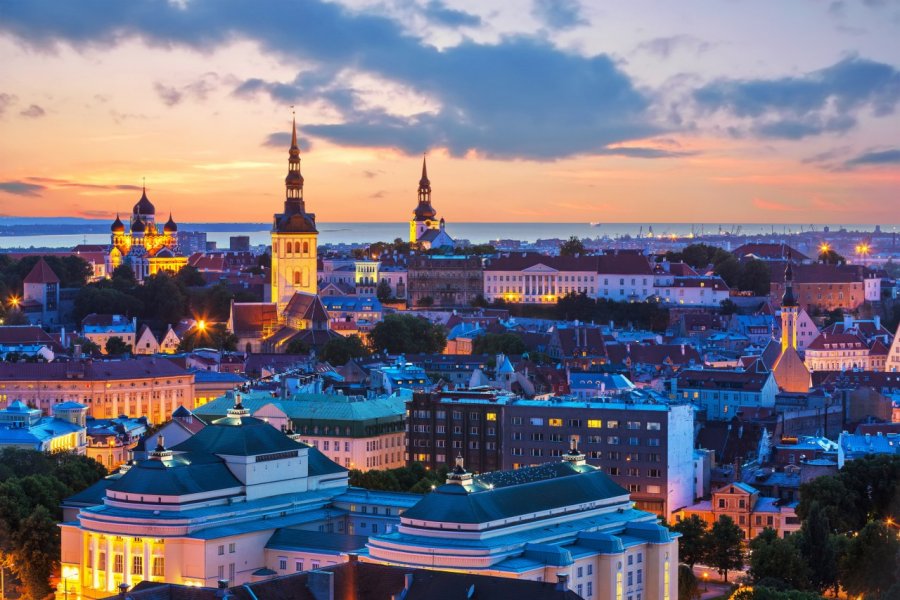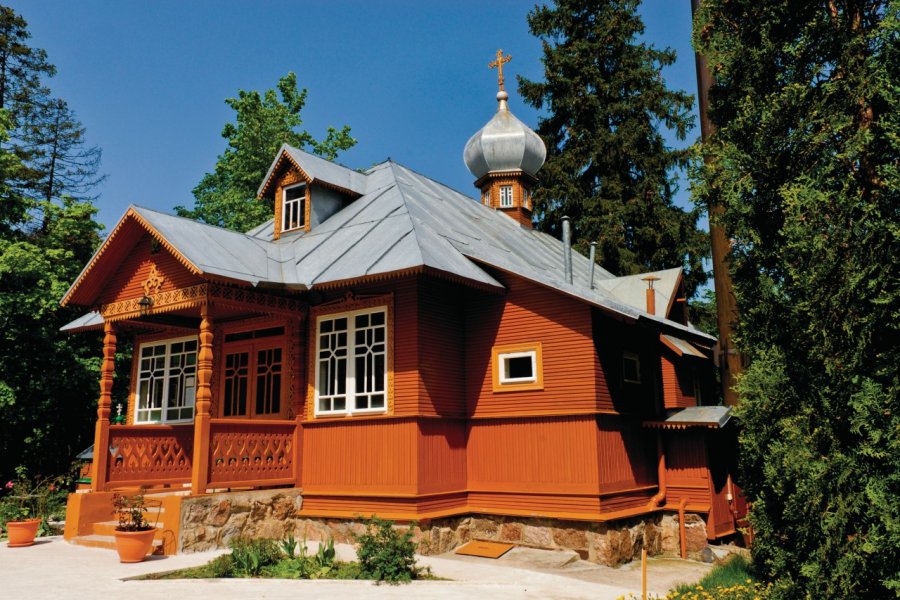Travel guide Estonia
It is in the north-east of the Baltic Sea that beautiful Estonia prospers, sheltering an architecture and natural spaces absolutely unsuspected. Its forest massifs, caressed by the sandy beaches of the coast, are dotted with admirable cities with an exceptionally well-preserved heritage, starting with the capital of Estonia, the gentle and hospitable Tallinn. In the west, at the water's edge, the wooden facades of Pärnu see holidaymakers pass by in the summer, while Tartu, in the east, is the guardian of Estonian traditions as well as the country's student capital. But it would be reductive to limit ourselves to this trio of big cities to talk about this small Baltic country. The Estonia travel guide also explores everything that can be found outside the cities: forests cover a huge part of the territory. The aquatic element is everywhere here, in the sea, in the rivers and lakes, in the sky too, as rainfall is frequent. The result is lush and rural landscapes in which the population has adapted, erecting picturesque wooden houses in the clearings and charming fishing villages on the islands that the wind blows away. The history of Estonia is rich and ancient, something that can be seen in its manors and castles, but also in the folklore, cultural and religious events that punctuate the year. Whichever way you go, you will leave the country with a feeling of serenity. Teretulemast Eestisse!
What to see, what to do Estonia?
-
Book an activity
-
Customized travel
- The most beautiful cities Estonia
When to go Estonia ?
If you are wondering when to go to Estonia, learn here that the high tourist season extends from mid-June to the end of August. This is probably the best time to go to Northern Europe, because of the warmer weather than the rest of the year, but also because of the amazing spectacle of the white nights: for almost a month (from mid-June to mid-July), it never gets dark, at most a 3-hour twilight before the sun comes back. However, the number of tourists is increasing and the prices are getting higher and higher (especially for accommodation, which should be booked in advance). If the Easter holidays attract tourists from the region (Scandinavians and Russians), winter is also a blessed season to walk through the Estonian territory, as long as you are not too afraid of the cold (from -5°C to -15°C on average). Tallinn, the capital, is dressed in white and has a striking charm: cover yourself well and enjoy the enchanting atmosphere offered by the white bell towers and the sound of footsteps in the snow. The off-peak seasons are autumn (October and November) and late winter (March and early April), largely due to the weather: autumn is gray, even dark and wet, and late winter is wet snow and sleet. When to go to Estonia? In the middle of summer, or in the middle of winter!
Suggested addresses Estonia
Travel Estonia
-
Find a hotel
-
Car Rental
-
-5% on travel insurance-15% off travel insurance
-
Find a local agency
Face à la quantité de choses à voir et à faire, on peut vite être déboussolé en se demandant par où commencer l'itinéraire au cœur de ces trois pays. Si beaucoup de touristes choisissent le circuit classique le long des trois capitales : Tallinn - Riga - Vilnius, les pays ont pourtant beaucoup plus à proposer. Laissez-vous guider ou simplement inspirer, par nos itinéraires en fonction de vos envies et de votre temps : une semaine, une dizaine de jours ou encore trois semaines. Vous pouvez aussi piocher dans nos itinéraires ciblés sur un pays - à la découverte de la diversité lettone, la diversité lituanienne, ou encore les incontournables pour visiter la Lituanie en une semaine, ou la découverte de l'Estonie en sept jours... Lisez, mixez afin de créer votre circuit parfait - pour un circuit classique ou en dehors des sentiers battus, avec ou sans enfant... Il y en a pour tous les gouts ! Bon séjour !
Find unique Stay Offers with our Partners
How to go Estonia
How to go alone
Nothing could be easier than to travel to Estonia on your own. The price of a plane ticket varies between 200 and 350 € for a round trip. In order to get good prices, it is necessary to book in advance. It is advisable to book accommodation in the cities you plan to visit in advance.
How to go on a tour
Estonia is a well-known destination for French-speaking travel agencies, and many of them offer turnkey trips, whether it is the Tallinn-Pärnu-Tartu trio or accompanied tours allowing to discover the forests and islands of the country. Packages including flight, accommodation and activities can be an economical solution, and greatly simplify the preparation of a trip to Estonia.
How to get around
Whether it is to go from one city to another or to reach the two other Baltic capitals (Riga and Vilnius), the most practical way is by bus. Comfortable and inexpensive, it is the preferred means of transportation for Estonians. The networks work very well and are remarkably punctual. The major cities, which can also be reached by cab, are also connected by minibuses. For more autonomy, renting a car can be easier.
Featured articles Estonia
Pictures and images Estonia
The 12 keywords Estonia
1. #Amber
This fossilized resin comes in the form of pebbles, often transparent and orange, sometimes with plants or insects. The Baltics have been trading amber for millennia, and Pliny the Elder wrote of this northern tribe "who themselves were astonished at the price at which they sold this material which they received from their sea".
2. #Art nouveau

Born at the turn of the 19th and 20th centuries, the Art Nouveau movement was based on the maxim "Function creates form, and form must be beautiful". Art Nouveau is most evident in architecture. No city in the world offers as much as Rīga, in terms of numbers, completeness of styles, beauty of facades..
3. #Grey Wagtail

This little gray-and-white bird is absolutely gorgeous! The Latvian people pay a great deal of attention to the ecosystem that surrounds them, with a particular fondness for this passerine bird with its high-contrast plumage and slender silhouette, the gray wagtail, to the point of becoming a true national symbol in Latvia.
4. #Beer
Beer is the most widely consumed alcohol in the Baltic States. Each city is firmly attached to its own brand or brands, some of which have been exported for over five centuries. There are few specificities linked to a particular terroir, but rather to the method used in a particular brewery, based on the know-how of medieval German brewers.
5. #Chat
You will quickly notice that in Rīga: the cat is king! Alley cat or racy, felines are in the hearts of Latvians. The number of families with a cat is twice as high as those with a dog. It is therefore not for nothing that the black cat on top of the 10 Meistaru Street has become one of the strongest symbols of national identity.
6. #Stork
In the countryside, when the weather is fine, it's common to see storks perched on their nests. The white stork is a strong symbol of the Baltic states, and Lithuania in particular, where it is the subject of many tales and legends. Northern Latvia is the world's largest black stork conservatory.
7. #Coccinelle
Latvia's national insect is the two-pea ladybird - from its Latin name Adalia bipunctata. It protects plants from pests. Slow in nature, it knows how to defend itself, which is appreciated by Latvians. As for its name mārīte in Latvian, it derives from that of the goddess Māra, who embodies the power of the earth.
8. #Cross
The sculpture of wooden crosses is a Lithuanian specificity. Both a symbol of national and religious identity, they can be found on roadsides, at the entrance to villages, near monuments or in cemeteries. They are between 1 and 5 m high, usually decorated with a small roof, floral or geometric motifs.
9. #Dainas
These popular songs, which in quatrains speak of everyday life, the gods and human feelings, were mostly composed by women. The oldest dainas date back to the 10th and 12th centuries, but the majority of these songs were created between the 13th and 16th centuries under Germanic rule.
10. Barn Swallow

The wagtail for the Latvians, the white stork for the Lithuanians, the only thing left for the Estonians was to adopt the barn swallow. The choice was made easy with its predominantly blue and white plumage which reminds the inhabitants of this country of their own flag. The bird's haughty bearing completes the mimicry with Estonia and its inhabitants.
11. #Lin

Lithuania is the world's leading producer of flax. The landscape in the north of the country, especially in the Panevėžys region, is full of windmills, but not only that. They can be found all over the national parks. It was in Panevėžys that the flax industry developed and, for any purchase, this town is widely recommended.
12. #Live
According to Live mythology, birds don't migrate in winter. They stay in Latvia and hide to hibernate. That's why there are still live songs, sung at Easter to wake the birds. The last native speaker of this language died in 2013, making Live a dead language.
You are from here, if...
You're a kiiking enthusiast. Kiik in Estonian means "swing" and kiiking means "to swing". In the 19th century, the particularity of kiiking was the size of the swings, which could reach up to 2.5 m in height and carry 4-7 people at a time. Kiiking is not an easy affair, especially for the legs. Thrills guaranteed!
You give flowers when you're invited to someone's home. The Baltics give each other flowers on every occasion, and they must be in odd numbers.
You take off your shoes as soon as you enter someone's home, especially in Lithuania.
In Latvia, to indicate a quantity, you don't use the thumb. so, "one" is indicated with the index finger raised, "two" with the index and middle fingers, and so on.
You get out into nature whenever you can. For the Balts, nature is sacred and it's important to go there to recharge your batteries.

